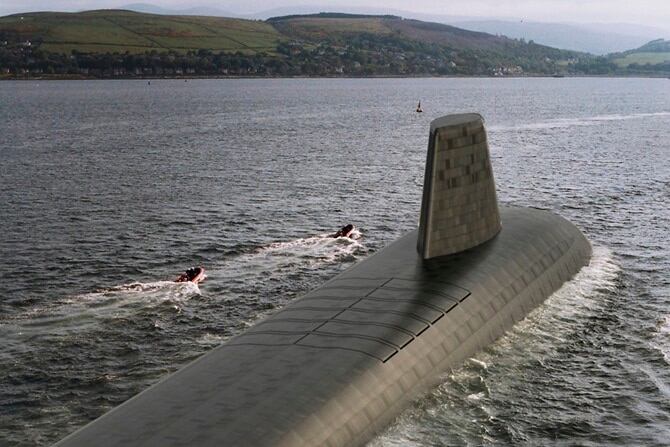LONDON — The UK Ministry of Defence has issued a new Defence Equipment Plan, detailing how the government will spend £186 billion ($243 billion) on military wares over the next decade amid an expected £7 billion ($9.1 billion) shortfall.
The plan sets out to ensure that sufficient funding for all major programs is applied, while in turn meeting the UK’s pledge to maintain a commitment to 2 percent of GDP on defense. Of that amount, 20 percent is earmarked for equipment.
Both the MoD itself and the National Audit Office (NAO) have highlighted that there is an affordability challenge in the new plan, however, with the coming four years predicted to pose the biggest test to the procurement proposal. Annual budget variances between 6.5 percent and 10 percent are expected during that time, according to government analysts.
The plan says that the central estimate for the cost of the plan at April 2018 exceeded the allocated budget by an average of 3.7 percent over the coming decade, adding that this prediction will fluctuate as projects play out.
The NAO’s published response to the new plan claims that it remains unaffordable, and forecasted that costs of £7 billion will come due over the coming ten years. Most of that shortfall, 84 percent, will be felt in the first four years.
“This variance could increase or decrease depending on different circumstances, with the department estimating a worst-case scenario of costs increasing by £14.8 billion should all the identified risks materialize. However, some of its analysis remains optimistic and costs could increase further,” NAO analysts wrote.
RELATED

Auditors are unconvinced by some of the defense ministry’s underlying assumptions for the plan, specifically the accounting of expected efficiencies.
The government stressed that it is addressing the risk to affordability, and during the 2017/18 financial planning worked with the Treasury to ensure the budget was sufficiently allocated where required.
“We are confident that with appropriate spend control and oversight, we will deliver the equipment plan within budget for 2018/19, as we did in 2017/18,” the plan says.
Officials said they are looking longer term, ensuring that affordability is maintained by improving financial management. For example, a new executive agency is now in charge of leading the procurement, maintenance and decommissioning of all UK nuclear submarines.
Submarines have the largest budget allocation from the £186 billion set aside under the new plan, taking a £44.6 billion share.
Combat air programs are set to receive £17.8 billion, with associated surveillance and target acquisition systems set at £4.9 billion. Support of aerial platforms is slated at £18.6 billion, followed by land systems at £18.4 billion, weapons at £13.8 billion, and rotorcraft at £9.6 billion.
RELATED

Successes that fell under the previous equipment plan include the commissioning of the HMS Queen Elizabeth carrier, the pending delivery of the first Ajax vehicle, and a deal for the acquisition of 50 AH-64E Apache helicopters.
Furthermore, the Eurofighter Typhoon is being upgraded via Project Centurion, the Rivet Joint achieved full operational capability, and an order was placed for the seventh Astute-class submarine, to be named HMS Agincourt.
However, there were shortfalls in four key programs over the previous reporting period, with aggregate forecast costs increasing on the following: £309 million on F-35; £278 million on Protector unmanned aerial vehicles, £199 million on Astute vessels 4-7; and £149 million on the Queen Elizabeth-class carriers.
Notably, Protector was delayed by 24 months, Astute vessels 4-7 by nine months, and Warrior Capability Sustainment Programme by 13 months. Those factors may have made the spending plan look more affordable.
In the 2018/19 plan, Navy Command plans to spend £32.5 billion over the next decade, Army Command some £30.2 billion, and Air Command £34 billion. The latter has notably been handed over the funding responsibility for the P-8 Poseidon from Joint Forces Command (JFC).
JFC plans to spend some £30.2 billion, meanwhile, and the Defence Nuclear Organisation is in the region of £40.9 billion.
The Strategic Programmes Directorate is mainly focused on the Complex Weapons Programme in concert with defense contractor MBDA, with 80% of the £10.5 billion budget over this period allocated to this work.








